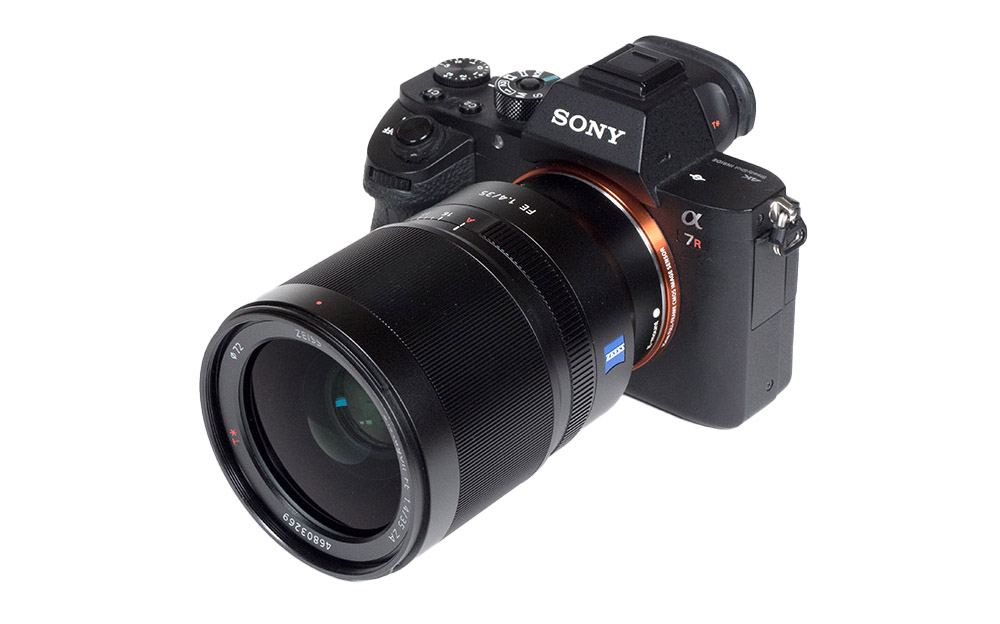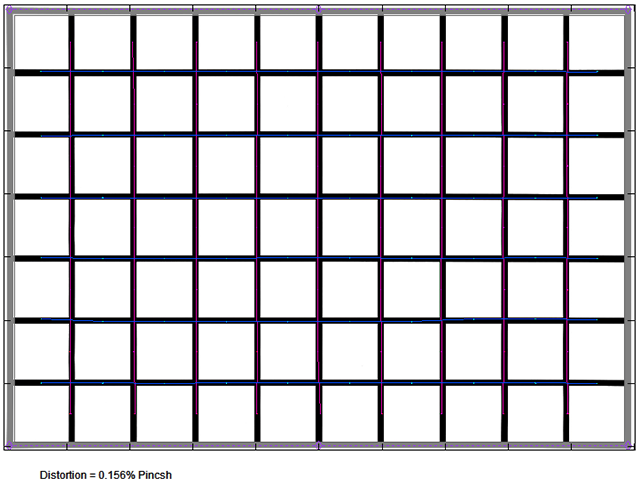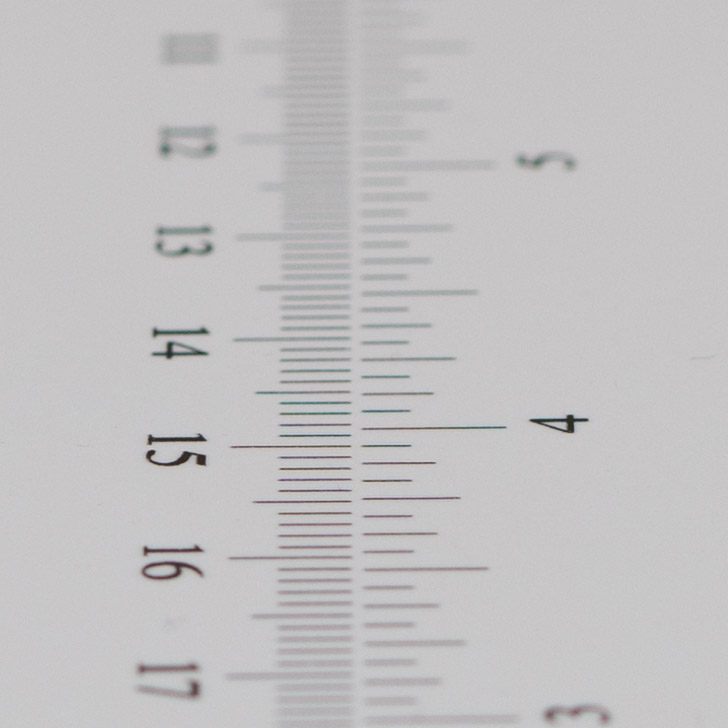
It seems as if the Zeiss-Sony relationship has cooled off a little lately- probably because both want to harvest the premium segment. Zeiss appears to gravitate towards their own Zeiss Batis lens lineup now whereas Sony is focusing on Sony G and GM lenses. However, a while ago, the Sony / Zeiss Distagon T* FE 35mm f/1.4 ZA was one of the first high-speed, pro-grade lenses released for Sony’s full format mirrorless system. As you may have guessed already, such a lens isn’t cheap at around 1500USD/EUR. However, and this may come as a shock to some, it is a little more affordable than similar offerings from Canon and Nikon. Feels almost like a Sony first in this respect …
In the Zeiss world, the word “Distagon” relates to a wide-angle lens – derived from DISTAnce (large distance to the subject) and the Greek word GONia (angle). Distagons are so-called retro-focus (inverted tele-) lenses. Traditionally such lenses allow a bigger distance from the rear element to the sensor (required for DSLRs) but this is not the case here.
The build quality of the Zeiss lens is superb. It’s a tightly assembled, all-metal construction. A rarely found feature in the Sony lineup is the dedicated aperture ring. Interestingly there’s a dedicated switch for choosing between “clicked” or smooth aperture changes. Movie makers will surely appreciate the option here. The focus ring operates silky smooth.
Mirrorless systems are often advertised towards smaller size and lower weight. This isn’t really true here (nor for most other Sony FE lenses actually). Compared to e.g. the Canon EF 35mm f/1.4 USM L II (DSLR lens), the Sony/Zeiss is just marginally more light-weight but it’s actually a bit longer.

Sony uses its Direct Drive Super Sonic Wave Motor (DDSSM) for auto-focusing. The AF speed is Okayish (on the A7R II) and AF operations are noiseless. The focus accuracy is very high. As usual, manual focusing works by-wire. For precision focusing this is a good thing but it feels different compared to a mechanically coupled focusing mechanism.
| Specifications | |
|---|---|
| Optical construction | 12 elements in 8 groups inc. 1x advanced aspherical & 2x aspherical elements |
| Number of aperture blades | 9 (circular) |
| min. focus distance | 0.3m (1:5.5) |
| Dimensions | 78.5×112.0mm |
| Weight | 630g |
| Filter size | 72mm |
| Hood | supplied, petal-style, bayonet mount |
| Other features | dust- and moisture-resistant, aperture ring |
Distortion
Image distortions are marginal at just 0.09% in raw mode. There’s a tiny mustache-style sub-frequency in there which is gone if you use image auto-correction.


Vignetting
Traditionally Zeiss tends to have a rather relaxed attitude towards vignetting (reads: higher than average) but the Distagon is in line with other lenses in this class. Still there’s a heavy light falloff at f/1.4 – about 2.8EV (or f-stops). However, at f/2 the issue is reduced substantially to 1.5EV. Beyond it’s still visible but not overly obtrusive anymore.
That’s in “raw” mode but these days most users will take advantage of image auto-correction which takes care of the issue (at cost of higher image noise in the image corners). At f/1.4 the correction is as high as 1.7 f-stops – down to 1.1EV. Again, that’s still visible at times but it’s certainly not annoying anymore. The vignetting is irrelevant from f/2 onward in this case.

MTF (resolution)
The resolution characteristic is a bit of a mixed bag on the A7R II (42 megapixels). The broader center zone is already very sharp at f/1.4 but the outer image field is soft. This still applies to f/2. At f/2.8 there’s a substantial boost in image quality. The center is excellent at this setting and the borders/corners are good to very good. The peak performance is reached between f/4 and f/5.6 with slightly better results still. Diffraction has a higher impact from f/11 but the setting is still usable.
The centering quality of the tested sample was good. Field curvature is not an issue.
Please note that the MTF results are not directly comparable across the different systems!
Below is a simplified summary of the formal findings. The chart shows line widths per picture height (LW/PH) which can be taken as a measure of sharpness. If you want to know more about the MTF50 figures you may check out the corresponding Imatest Explanations.

Chromatic Aberrations (CAs)
The Zeiss lens produces a fairly low amount of lateral CA (color shadows at harsh contrast transitions) starting with an average CA pixel width of 1.25px at f/1.4, decreasing to around 0.7px from f/2.8 onward.

Bokeh
Sheer performance is one thing but the real essence of a f/1.4 lens is its ability to produce a shallow depth-of-field and nice bokeh (rendition of the out-of-focus blur).
Unfortunately, out-of-focus highlights are not a strength of the Zeiss lens. While the highlight discs are circular (near the center), the inner zone has an onion-like sub-structure- this is typical for lenses that are based on multiple aspherical elements. As usual the roughness increases the more you stop down.

Near the borders, the circular discs deteriorate somewhat as you can see below.

The general blur isn’t all that great either. Below are two sample crops were taken at f/1.4 just in front and behind the focus zone. You may notice that the (undesired) contrast increases at edge transitions – see the spades and diamond symbols which aren’t rendered symmetrically.

Just to be fair here – most wide angle lenses struggle regarding the bokeh rendition thus the Zeiss is simply no exception to the rule.
Bokeh Fringing
So-called bokeh fringing is an effect that occurs around the focus point (on the Z-axis). It’s visible as halos of different colors in out-of-focus areas – magenta (red + blue) in front of the focus point and green beyond.
The Zeiss Distagon T* 35mm f/1.4 ZA offers no obvious correction for this color fringing effect. The colored halos are very obvious at fully open aperture and remain visible from f/1.4 to at least f/2.8.
If you traverse through the aperture range below, you will also observe that the focus remains static (thus no residual spherical aberrations).




Sample Images
The Competition
Sony users have a number of options when it comes to 35mm prime lenses. The Samyang FE 35mm f/1.4 (center below) is directly competing with the Zeiss Distagon T* FE 35mm f/1.4 ZA (left). At just over half the price of the Zeiss lens it is a compelling alternative. If you can live with less speed, you have at least three more options. The Zeiss Sonnar T* FE 35mm f/2.8 (to the right) is obviously tiny in comparison and about as good at comparable aperture settings. Samyang has another 35mm lens in their lineup – an AF 35mm f/2.8 pancake – for just 350USD. Other than the exotics, there’s also the Zeiss Loxia 35mm f/2 which sits in between in terms of speed but you have to live without AF in this case.

Visual comparison courtesy of camerasize.com.
It isn't easy to come to a conclusion about the Zeiss Distagon T* FE 35mm f/1.4 ZA. Technically it has some weaknesses but then we have seen these weaknesses in other representatives of this class (high-speed wide-angle primes). The resolution characteristic is great in the image center straight from f/1.4. However, the image corners are not that hot till about f/2.8. Now does that matter from a real-world perspective? Usually, it doesn't. If you use the lens at large apertures, the corners are rarely of relevance and, most likely, not on the same focus plane as your main subject anyway. Stopped down to f/4 the Zeiss lens is plenty sharp across the image field. Image distortions are pretty much absent and lateral CAs aren't overly relevant either. If you use the lens without image correction you will notice very high vignetting at fully open aperture but that's rather normal. A bit of an unfortunate shortcoming is the quality of the bokeh. You can, of course, produce lots of "blur" if the focus spread between your main subject and the surroundings is sufficient enough but the technical bokeh is fairly rough in the focus transition zones and out-of-focus highlights aren't a strength either. There also quite a bit of bokeh fringing. Then again - we have seen all this in many other 35mm f/1.4 lenses in the past.
Mechanically the lens is near-perfect. It feels as if it was carved out of rock and all controls are super smooth. The weather sealing is the cream on the cappuccino here. However, don't expect wonders in terms of AF speed - it's nothing to write home about really. A 35mm f/1.4 isn't meant for action photography so for most that shouldn't be an issue though.
So if you require such a fast 35mm prime lens, the Zeiss is certainly worth a look. However, if you are willing to look beyond the mainstream, you may also check out the new Samyang AF 35mm f/1.4 FE although keep in mind that Samyang doesn't really have the best record when it comes to centering quality.
-
Optical Quality
-
Build Quality
-
Price / Performance

